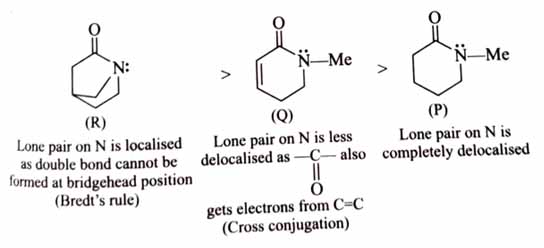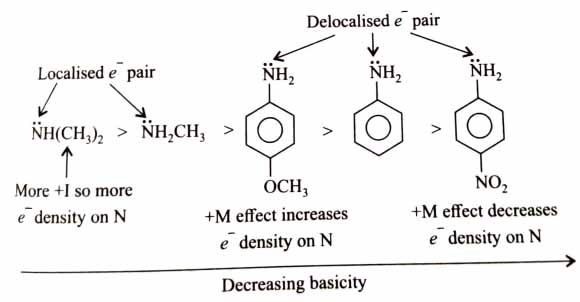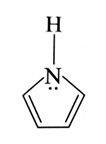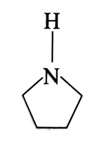Topic Question Set
Q 1
:
A compound (x) with molar mass 108 g undergoes acetylation to give product with molar mass 192 g . The number of amino groups in the compound (x) is ______. [2024]
(2)
If there is one amino group in an organic compound, then difference between the organic compound and the product after acetylation is of , which corresponds to a mass difference of 42 .
Mass difference between acetylation product and the given organic compound is (192 - 108) = 84 . This corresponds to 2 amino groups in the compound.
Q 2
:
Which of the following is the strongest Bronsted base? [2024]
(3)
In (1), (2) and (4) lone pair on N is delocalized due to resonance. In (3), lone pair on N is localized that can be donated easily and hence, (3) is strongest base among all the given options.
Q 3
:
The correct order of basic nature in aqueous solution for the bases
and is: [2025]
(4)
For ethyl substituted amines, order of basicity in aqueous solution is: 2° > 3° > 1° > .
Q 4
:
The correct order of basicity for the following molecules is: [2025]


P > Q > R
R > P > Q
Q > P > R
R > Q > P
(4)

Q 5
:
The descending order of basicity of following amines is:

Choose the correct answer from the options given below: [2025]

B > E > D > A > C
E > D > B > A > C
E > D > A > B > C
E > A > D > C > B
(2)

Q 6
:
Given below are some nitrogen containing compounds.

Each of them is treated with HCl separately. 1.0 g of the most basic compound will consume ______ mg of HCl.
(Given molar mass in g : C = 12, H = 1, O = 16, Cl = 35.5) [2025]

(341)
In aromatic amines, lone pair of N is delocalized due to resonance. Hence aromatic amines are less basic than aliphatic amines. Thus benzyl amine is most basic as it is aliphatic amine and rest all amines are aromatic amines.
1 mol of reacts with 1 mol of HCl.





